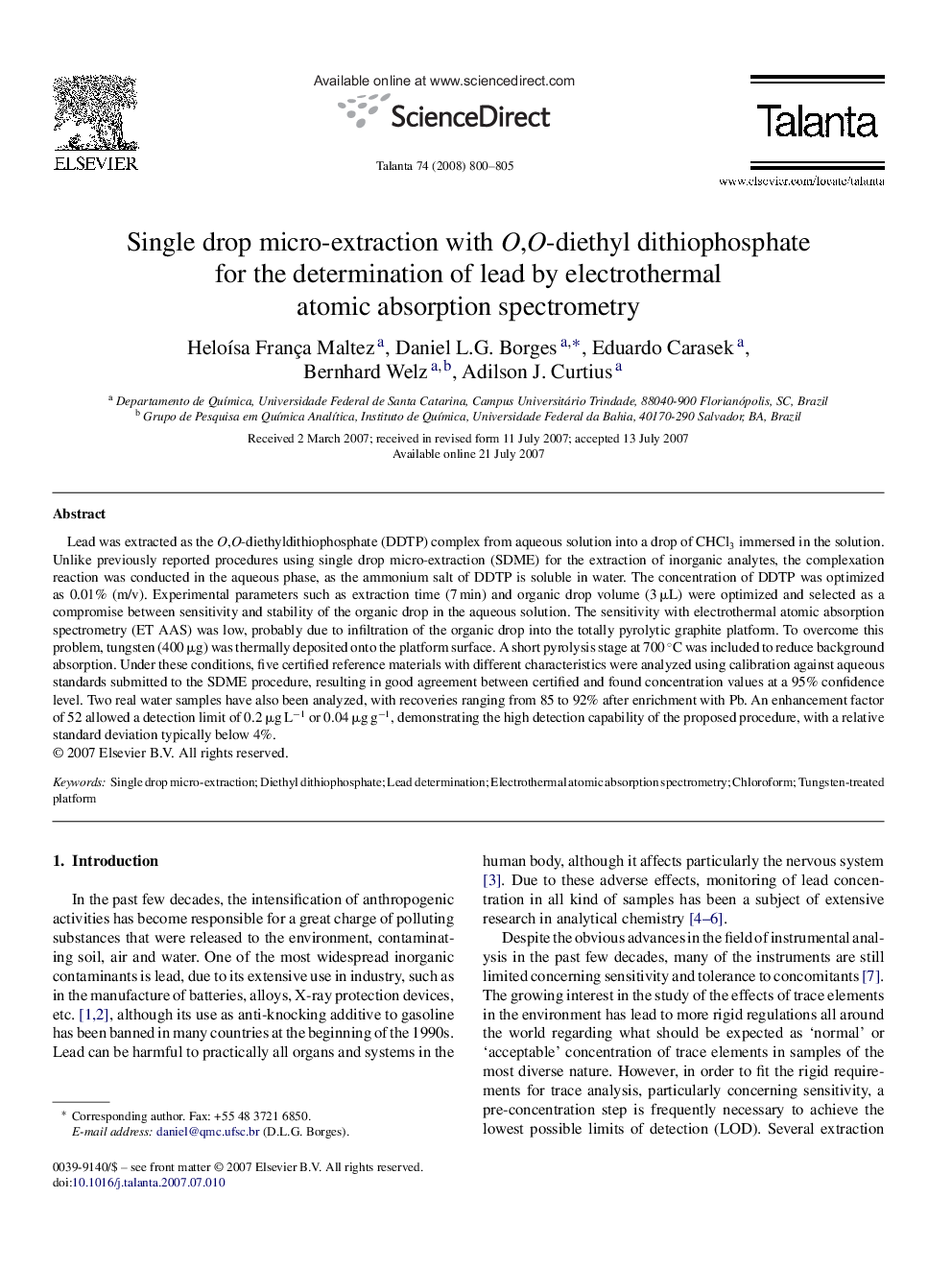| Article ID | Journal | Published Year | Pages | File Type |
|---|---|---|---|---|
| 1247120 | Talanta | 2008 | 6 Pages |
Lead was extracted as the O,O-diethyldithiophosphate (DDTP) complex from aqueous solution into a drop of CHCl3 immersed in the solution. Unlike previously reported procedures using single drop micro-extraction (SDME) for the extraction of inorganic analytes, the complexation reaction was conducted in the aqueous phase, as the ammonium salt of DDTP is soluble in water. The concentration of DDTP was optimized as 0.01% (m/v). Experimental parameters such as extraction time (7 min) and organic drop volume (3 μL) were optimized and selected as a compromise between sensitivity and stability of the organic drop in the aqueous solution. The sensitivity with electrothermal atomic absorption spectrometry (ET AAS) was low, probably due to infiltration of the organic drop into the totally pyrolytic graphite platform. To overcome this problem, tungsten (400 μg) was thermally deposited onto the platform surface. A short pyrolysis stage at 700 °C was included to reduce background absorption. Under these conditions, five certified reference materials with different characteristics were analyzed using calibration against aqueous standards submitted to the SDME procedure, resulting in good agreement between certified and found concentration values at a 95% confidence level. Two real water samples have also been analyzed, with recoveries ranging from 85 to 92% after enrichment with Pb. An enhancement factor of 52 allowed a detection limit of 0.2 μg L−1 or 0.04 μg g−1, demonstrating the high detection capability of the proposed procedure, with a relative standard deviation typically below 4%.
